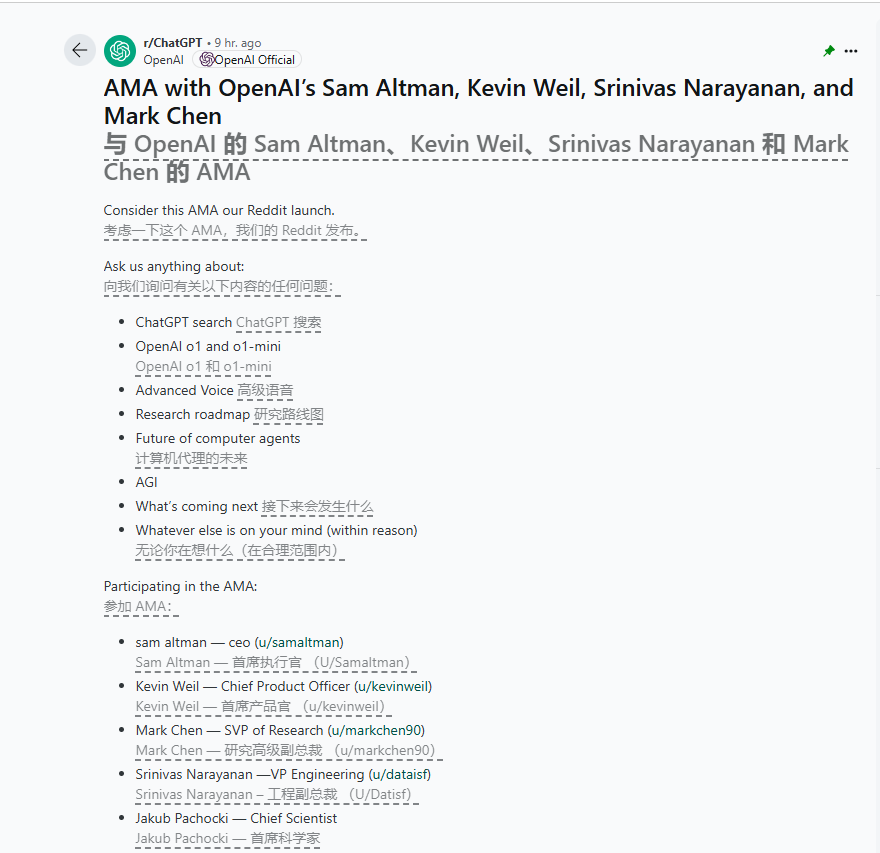OpenAI CEO Sam Altman recently confessed in Reddit Q&A that insufficient computing power is the main bottleneck that hinders companies' frequent launch of new products. AI models are becoming increasingly complex, and resource allocation has become a huge challenge for OpenAI, resulting in delays in many planned features and product updates. This not only affected the visual function of ChatGPT's advanced voice mode, but also made the major updates of DALL-E and the release of Sora, a video generation tool, far away. The company also faces personnel changes and technical difficulties, which further aggravates the difficulty of product development. This article will conduct in-depth analysis of the challenges facing OpenAI and its future development plans.
In a recent Reddit Q&A, OpenAI CEO Sam Altman admitted that insufficient computing power is one of the main reasons why the company cannot launch new products frequently. He said the current AI model is becoming more and more complex, and OpenAI faces many limitations and difficult decisions in how to allocate computing resources to achieve numerous excellent ideas.

According to multiple reports, OpenAI has encountered difficulties in obtaining sufficient computing infrastructure. This week, Reuters quoted sources as saying that OpenAI is working with Broadcom to develop an AI chip to run its models, which is expected to be released by 2026.
Due to the tight computing power, Altman revealed that the originally planned visual capabilities in ChatGPT's Advanced Voice Mode will not be launched in the near future. Back in April, OpenAI showed off its ChatGPT app running on smartphones and being able to identify visual information such as clothing people are wearing in the camera’s field of view. However, reports have pointed out that the demonstration was intended to grab the attention of Google I/O developer conferences, and many OpenAI internal employees believe that GPT-4o is not ready to be revealed.
In the Q&A, Altman mentioned that there is no release date yet for the next major update of OpenAI's image generator DALL-E. Meanwhile, OpenAI's video generation tool Sora is delayed due to the need to improve models, ensure security, and expand computing power. Sora has also encountered some technical setbacks, putting it at a disadvantage in its competition with competitors such as Luma and Runway.
In addition, in October, Sora's co-head Tim Brooks left the company to go to Google. In the Q&A, Altman mentioned that OpenAI is still considering whether to allow "adult content" to appear in ChatGPT, and said that the company's current priority is to improve the performance of the o1 series "inference" model and its subsequent versions. At this week’s DevDay conference, OpenAI showed off some new features that will be launched, including image understanding.
"We're going to launch some really nice new versions later this year, but we won't call it the GPT-5," Altman concluded.
Key points:
OpenAI CEO said insufficient computing power is the main reason for product release delays.
The company is working with Broadcom to develop AI chips, which are expected to be released in 2026.
There is no clear release time for updates to products such as DALL-E and Sora.
In short, OpenAI currently faces multiple challenges such as computing power, talent loss and technical bottlenecks. Although it plans to launch a new version in the future, there is still uncertainty about the specific release date. The company is actively seeking solutions to computing power problems, such as cooperating with Broadcom to develop AI chips, which will have a profound impact on the future development of OpenAI. We can expect OpenAI to bring more surprising product and technological breakthroughs after overcoming these challenges.